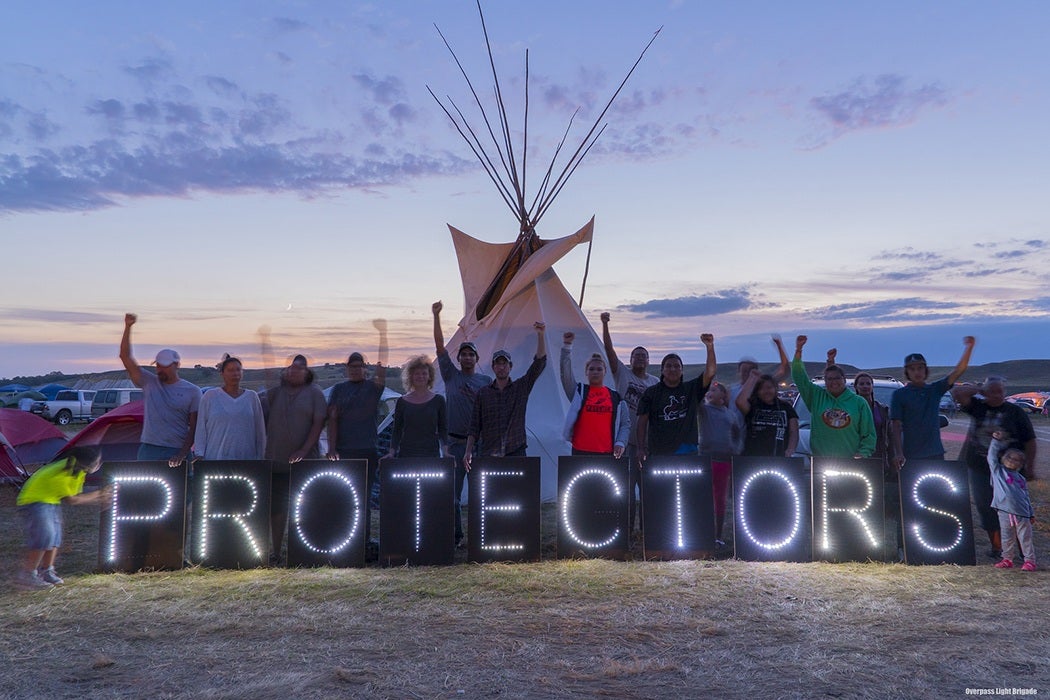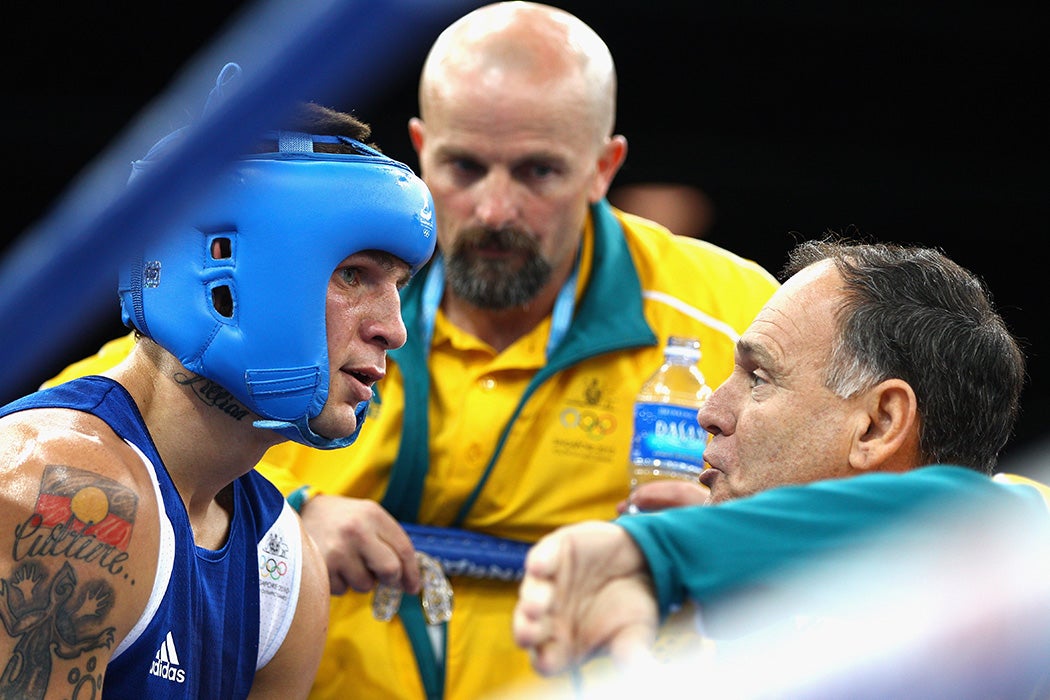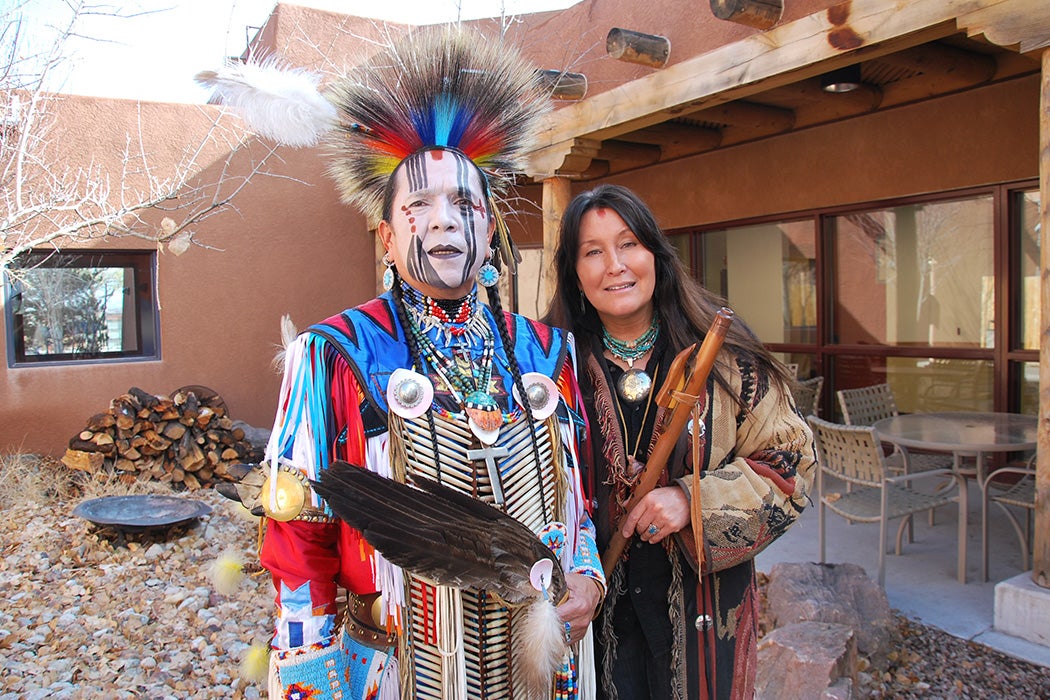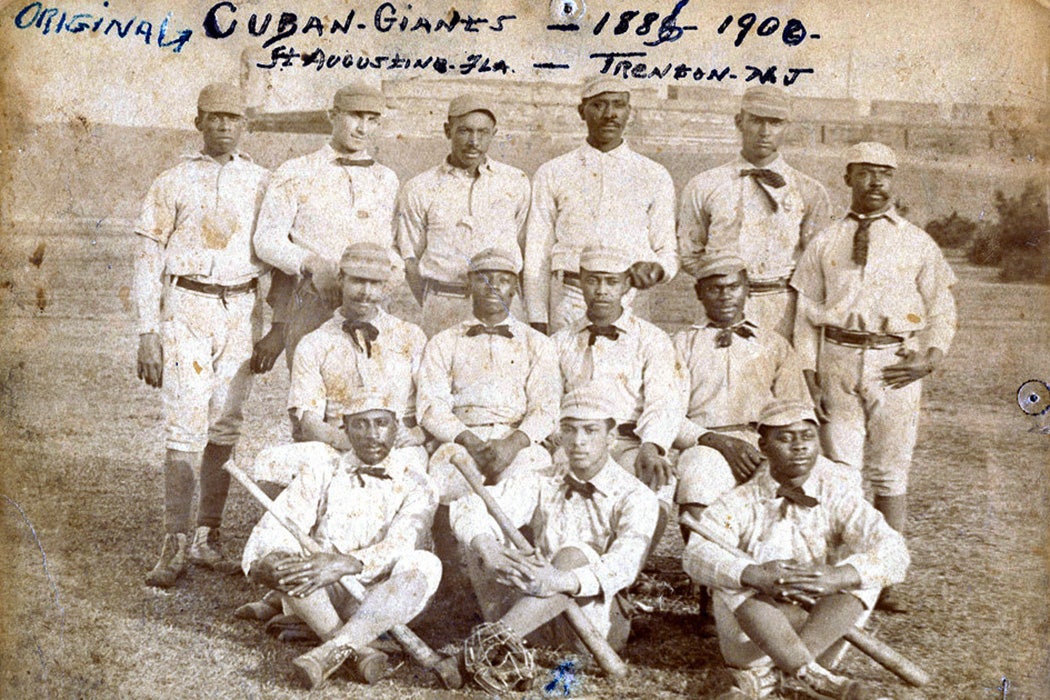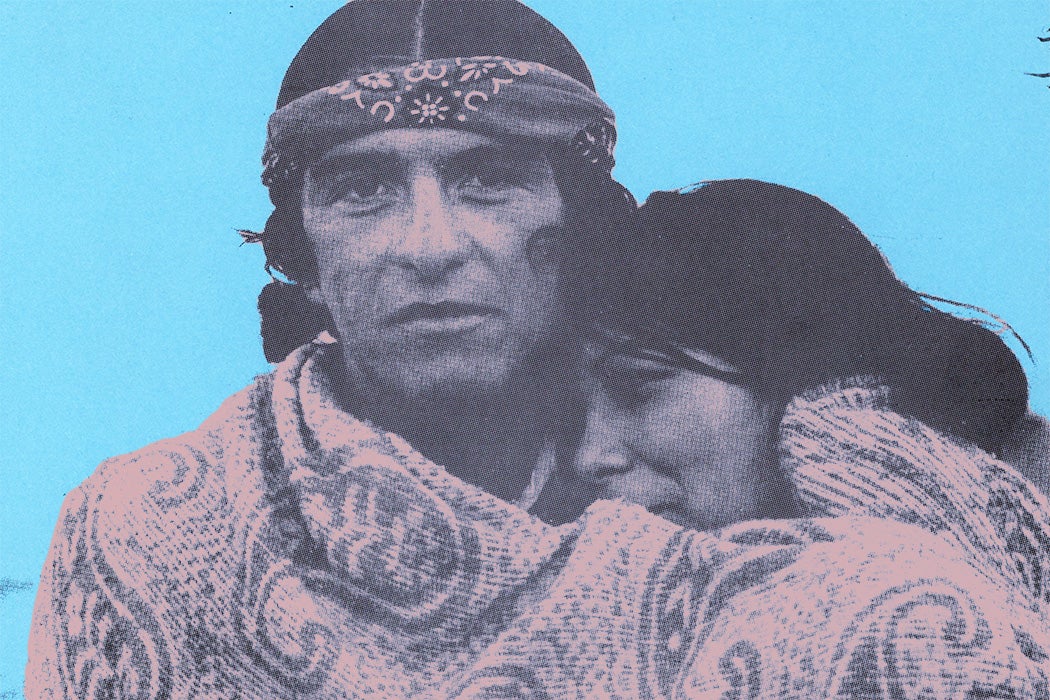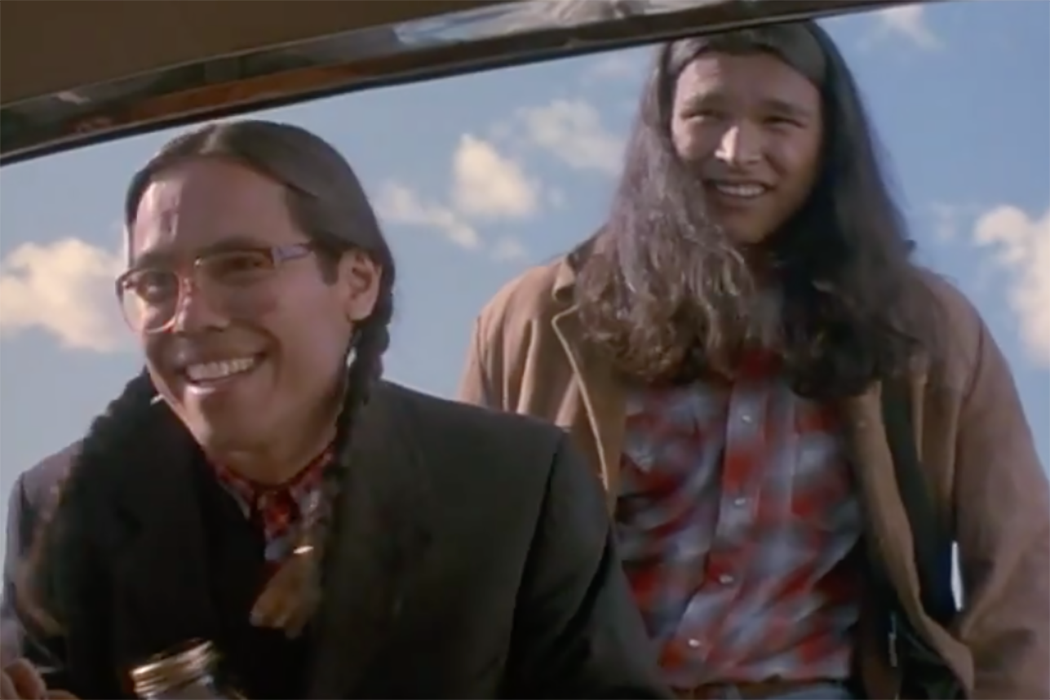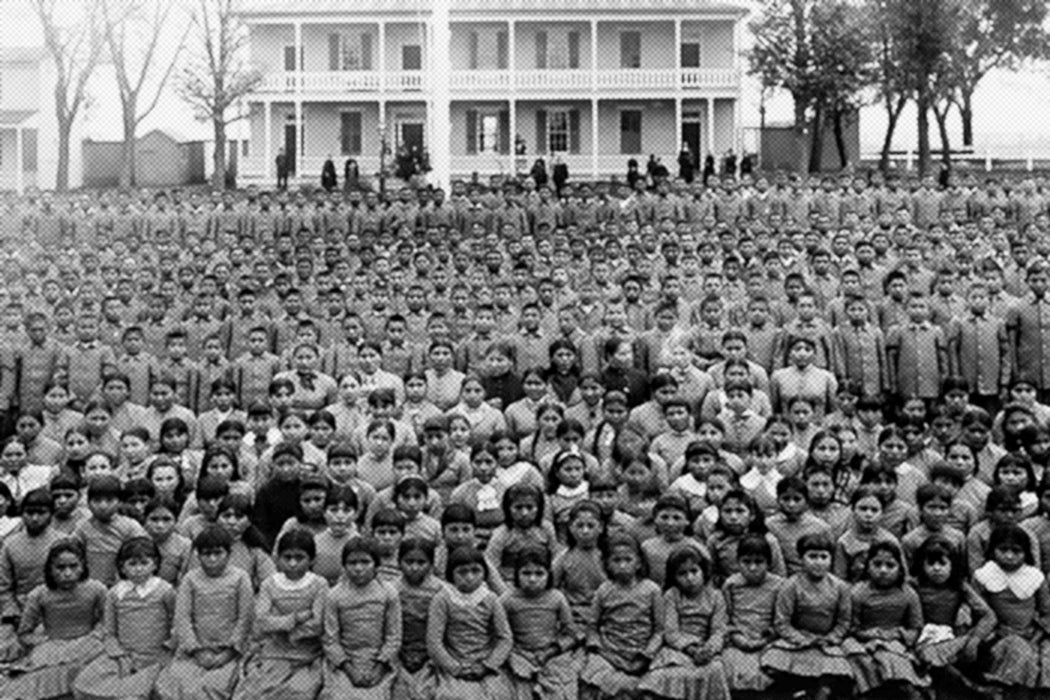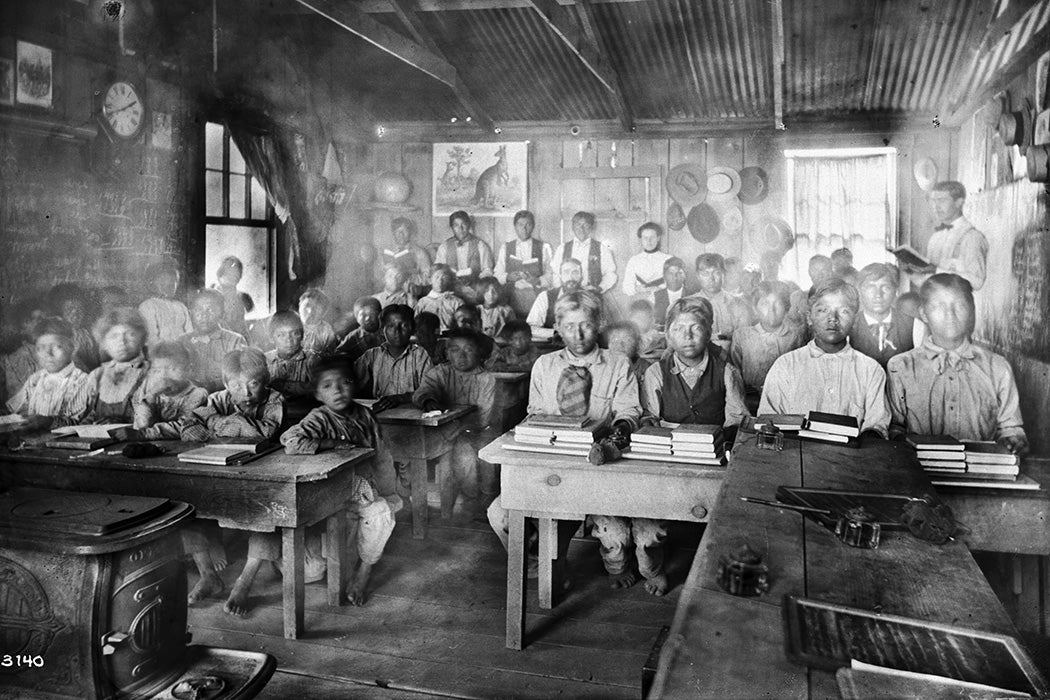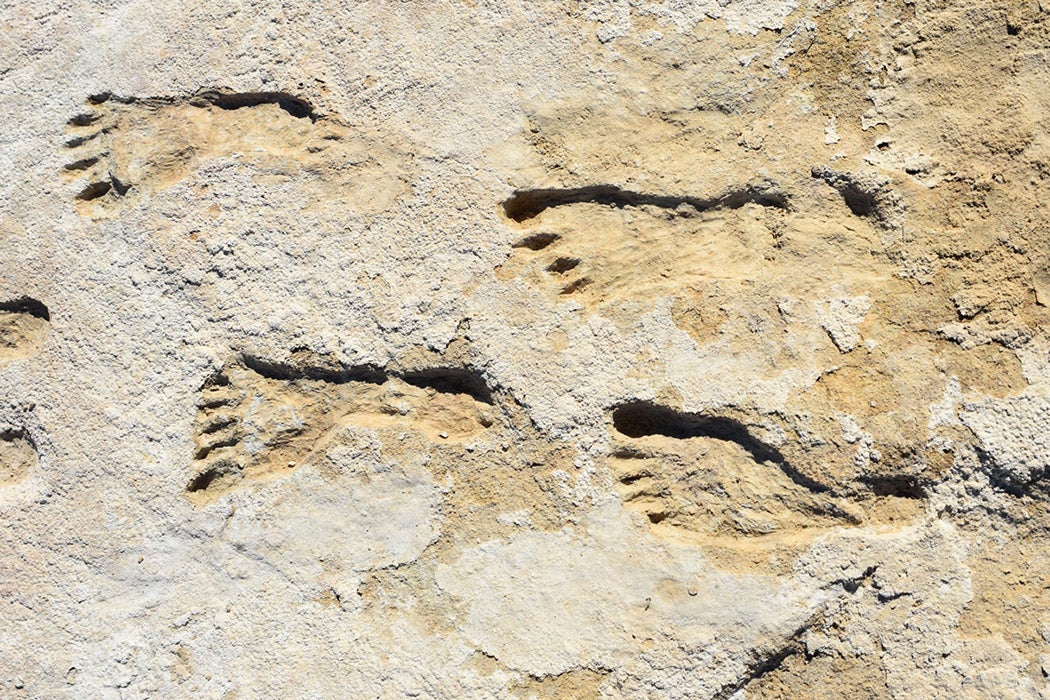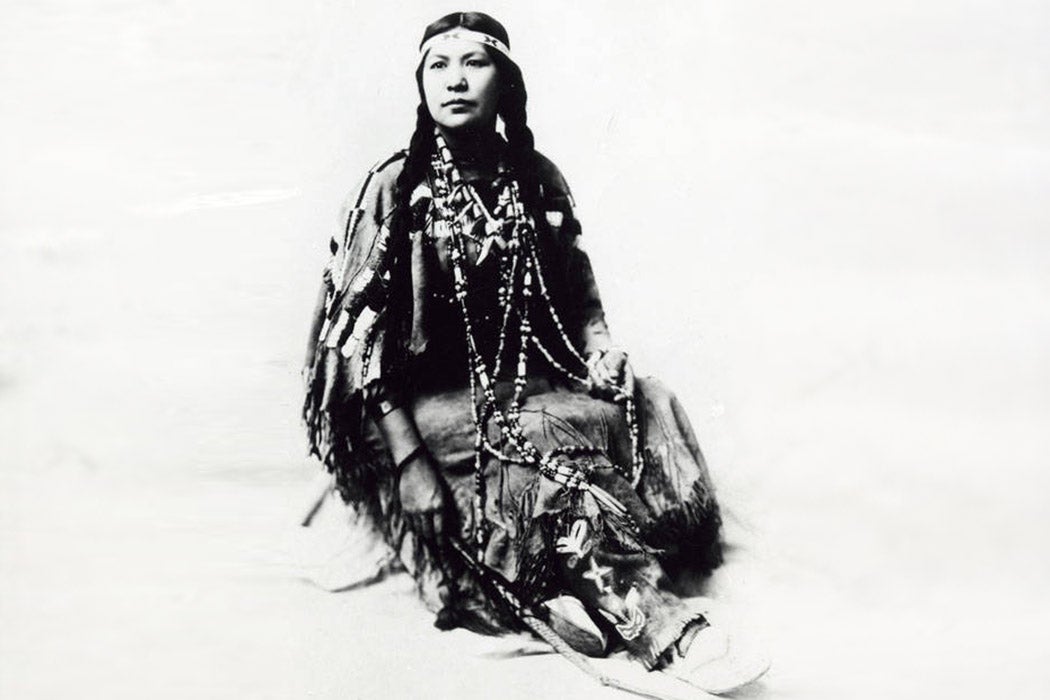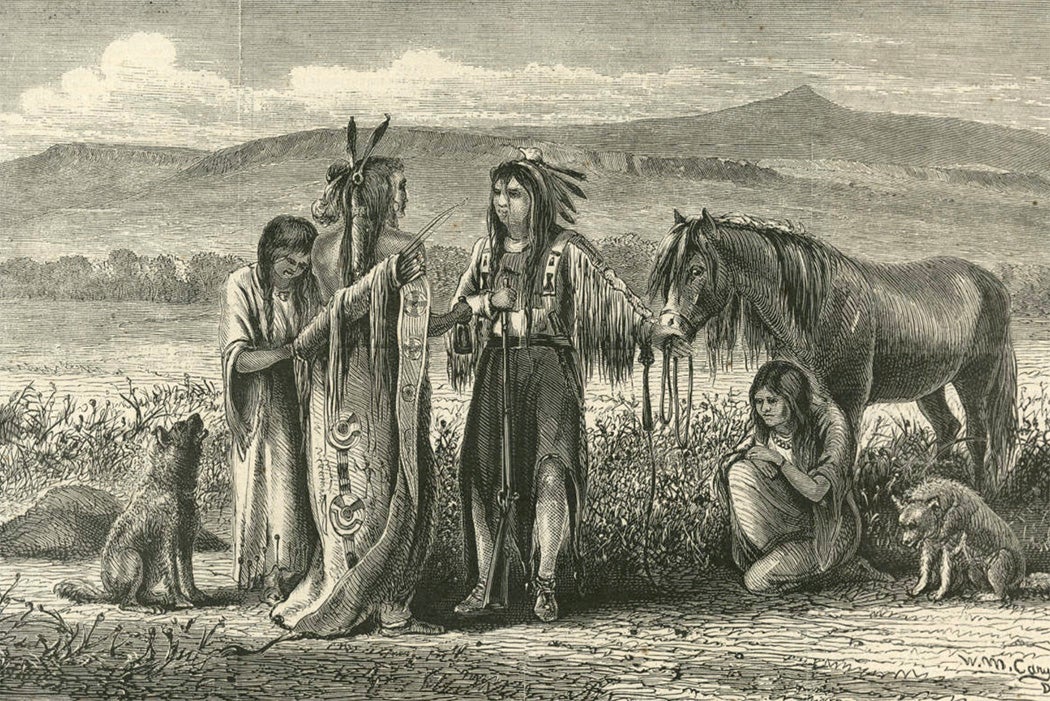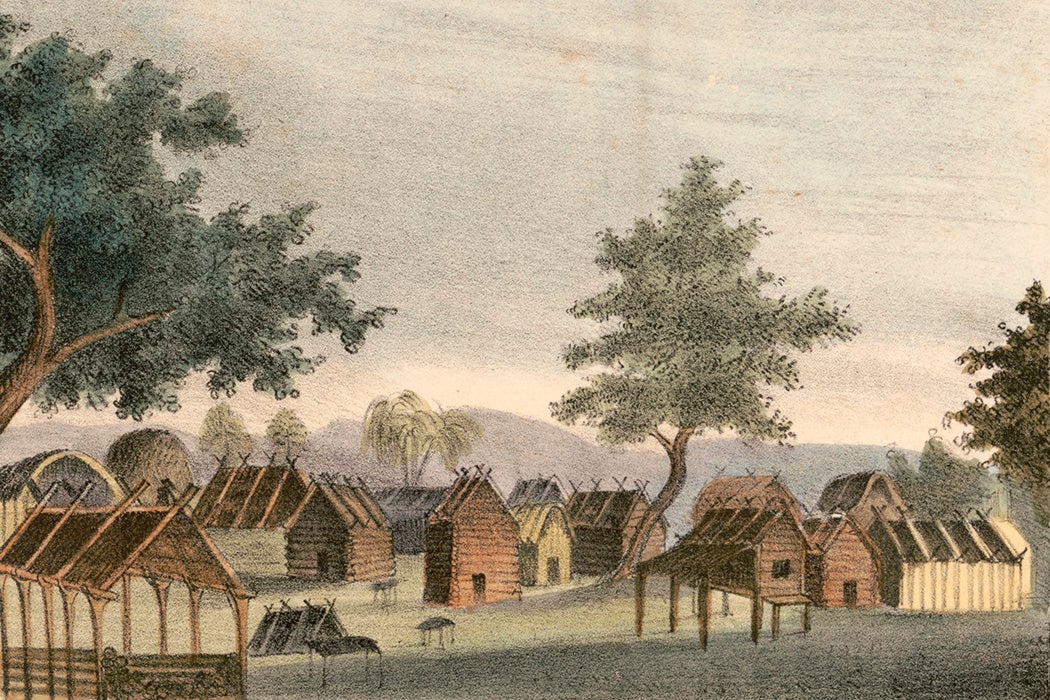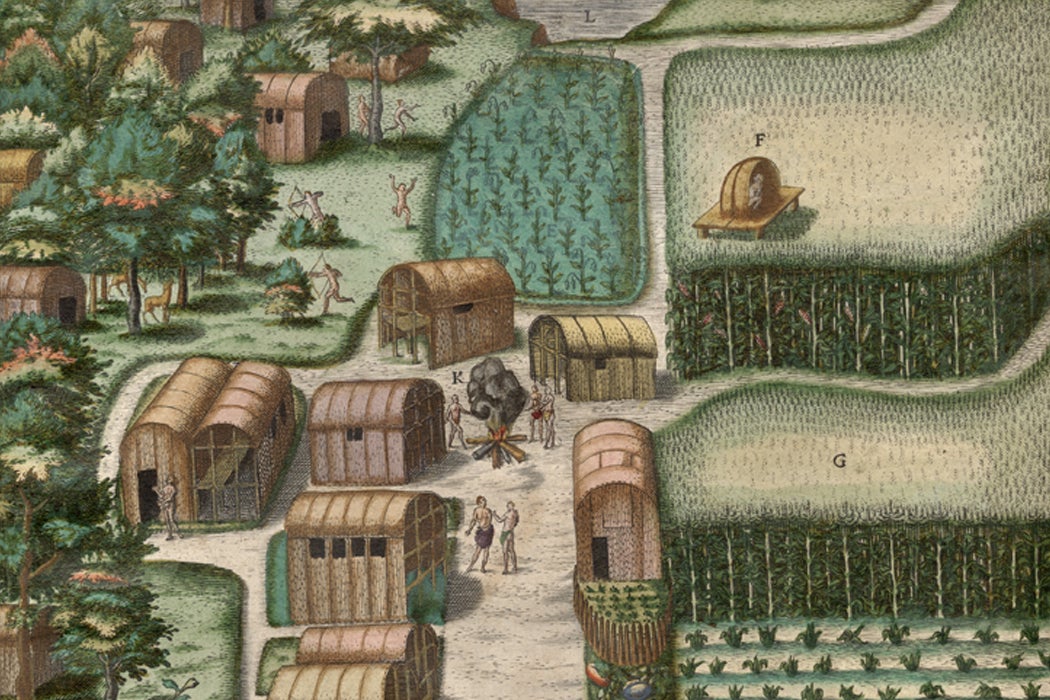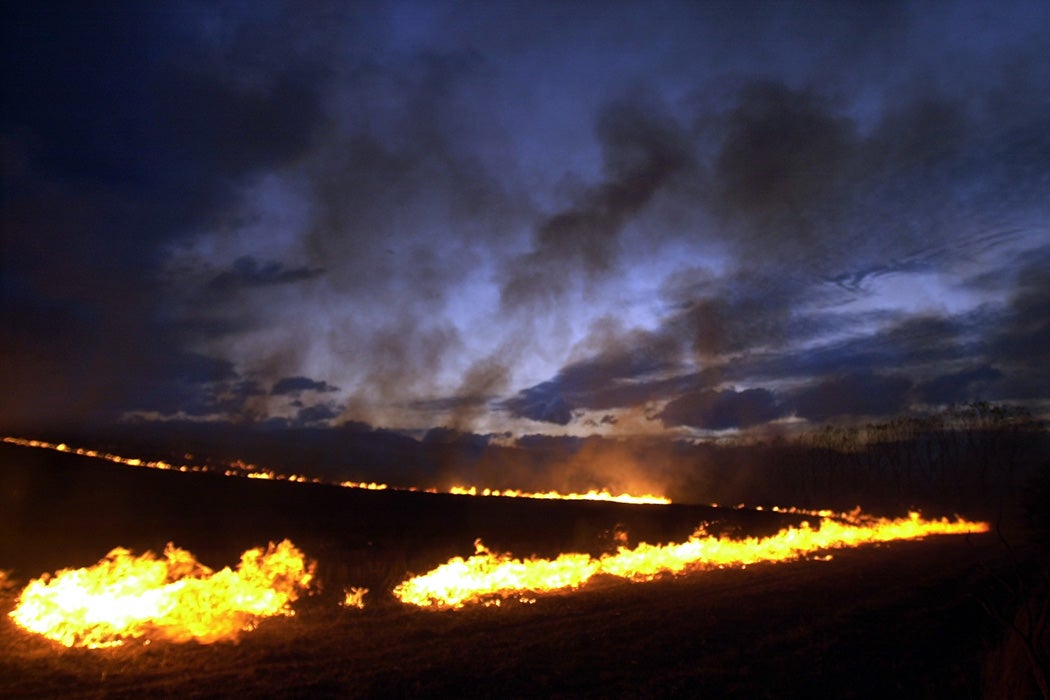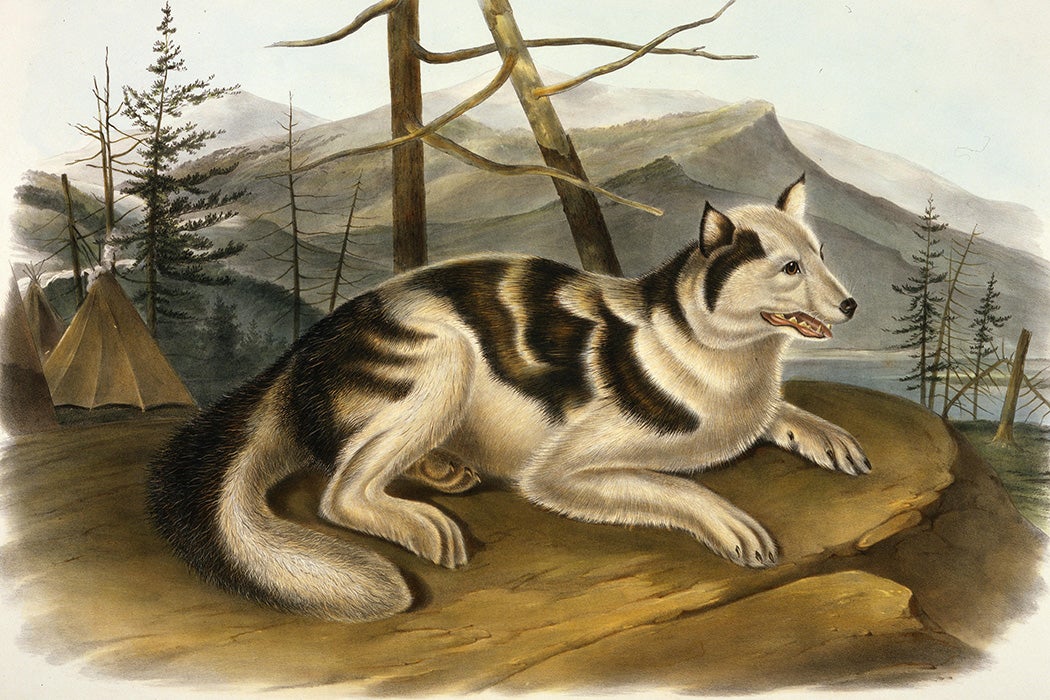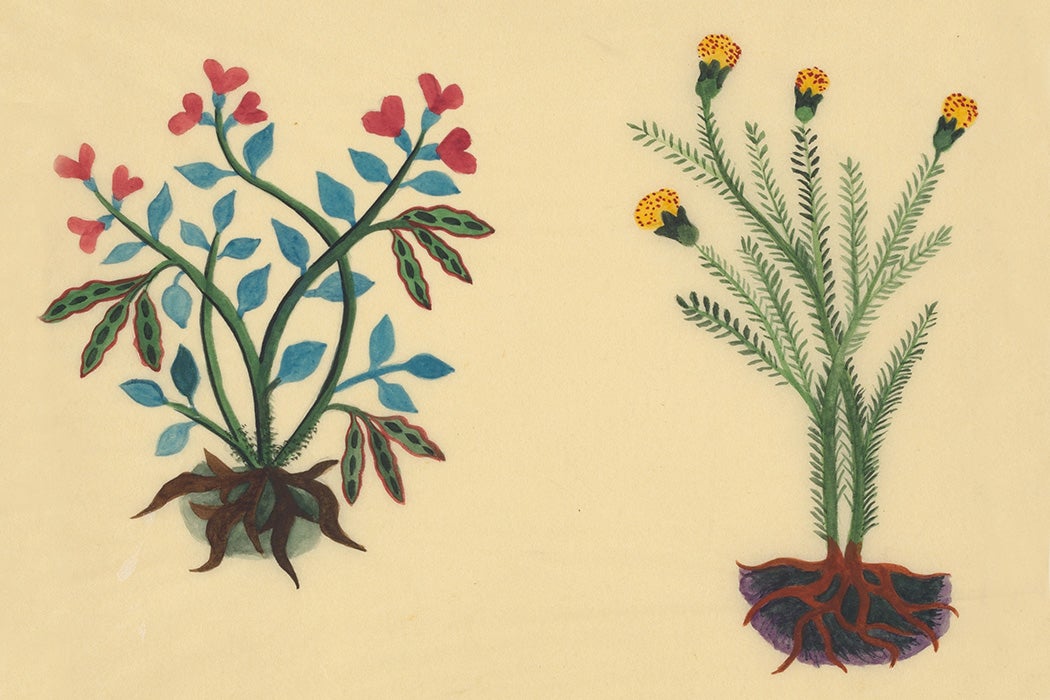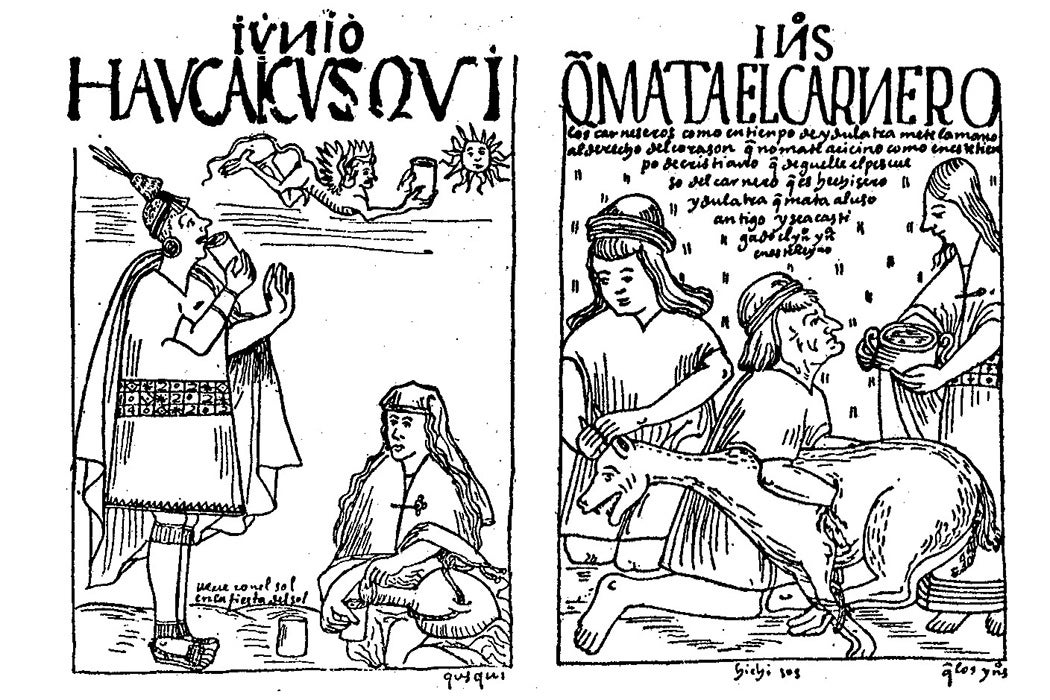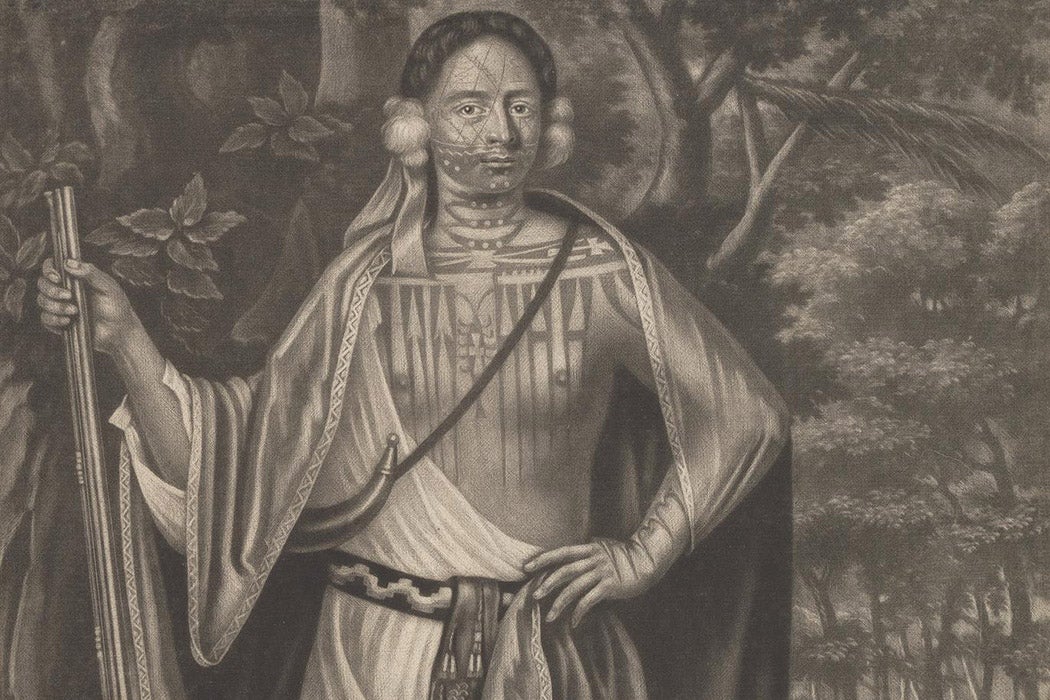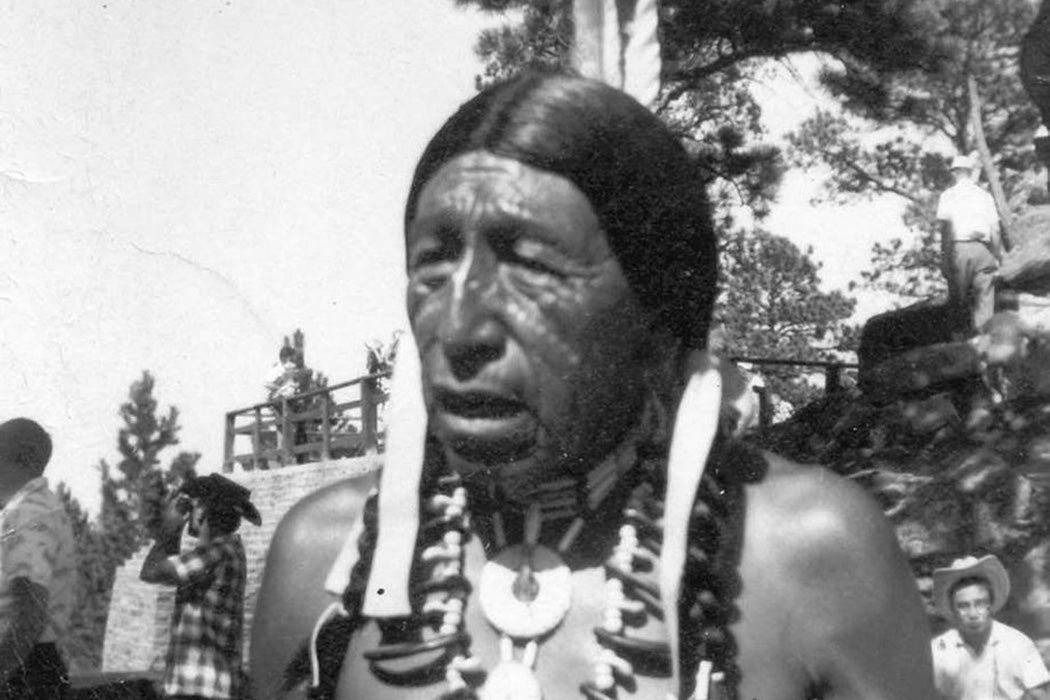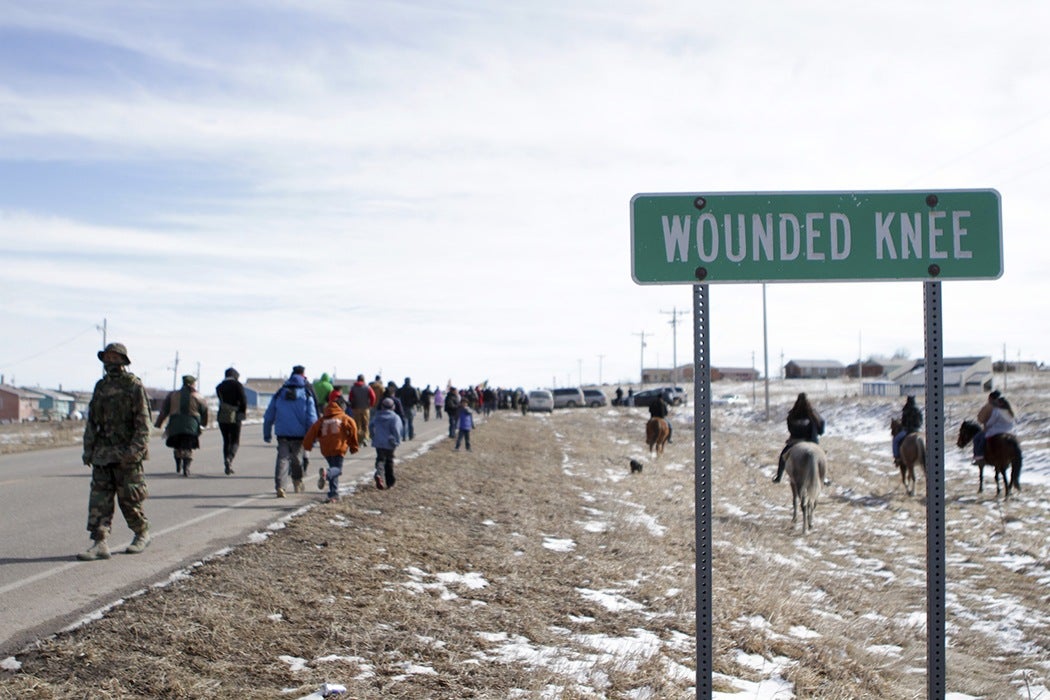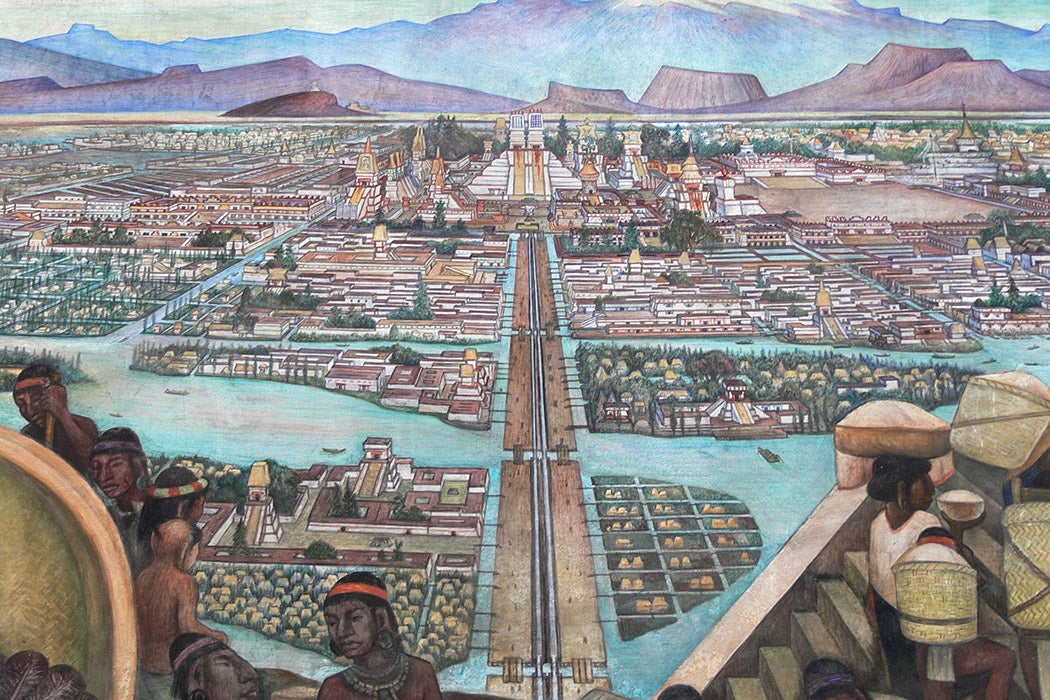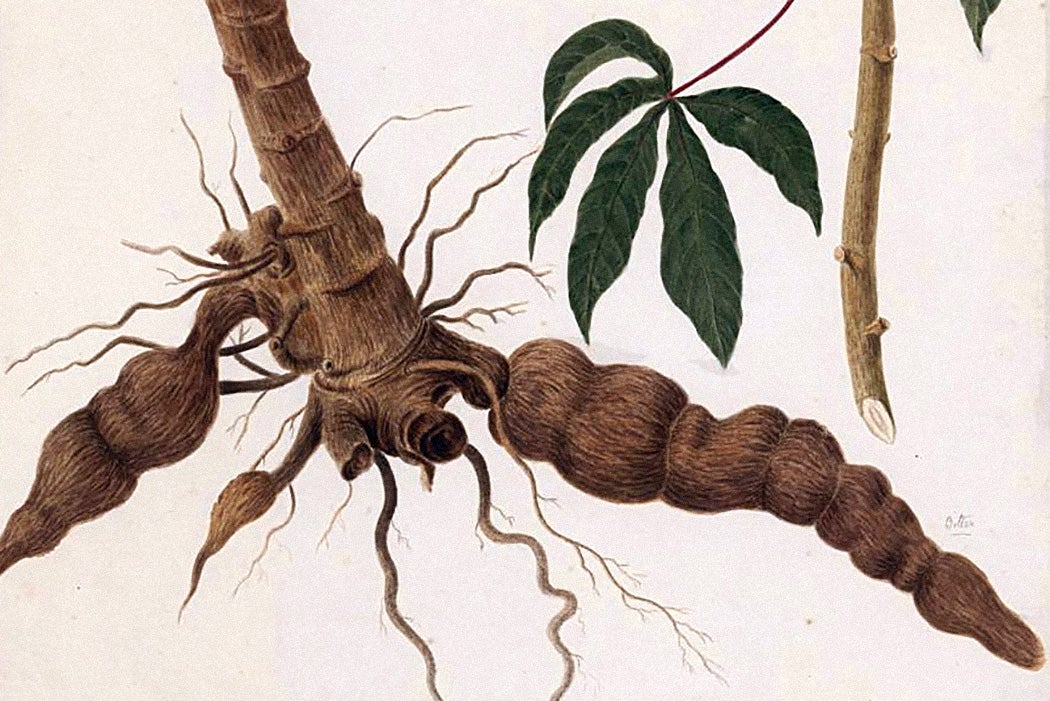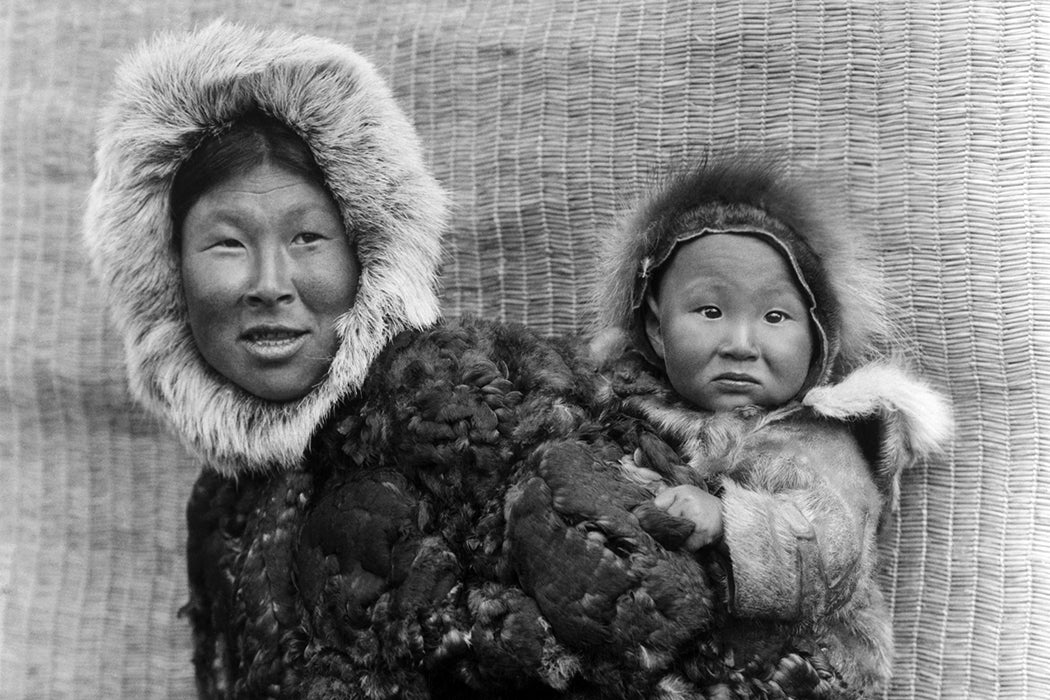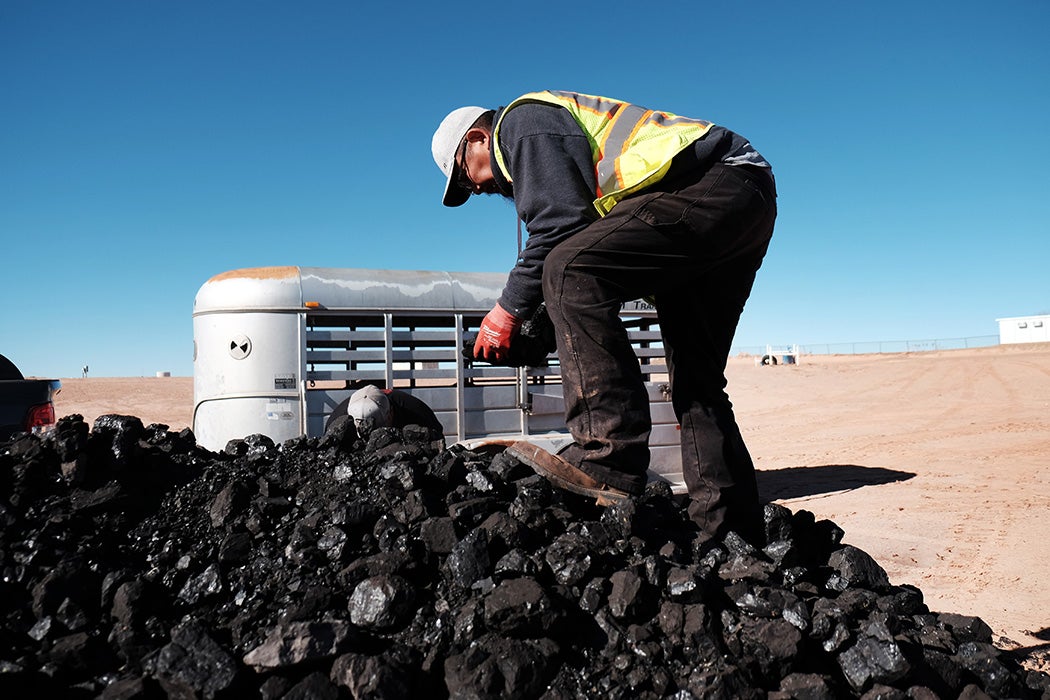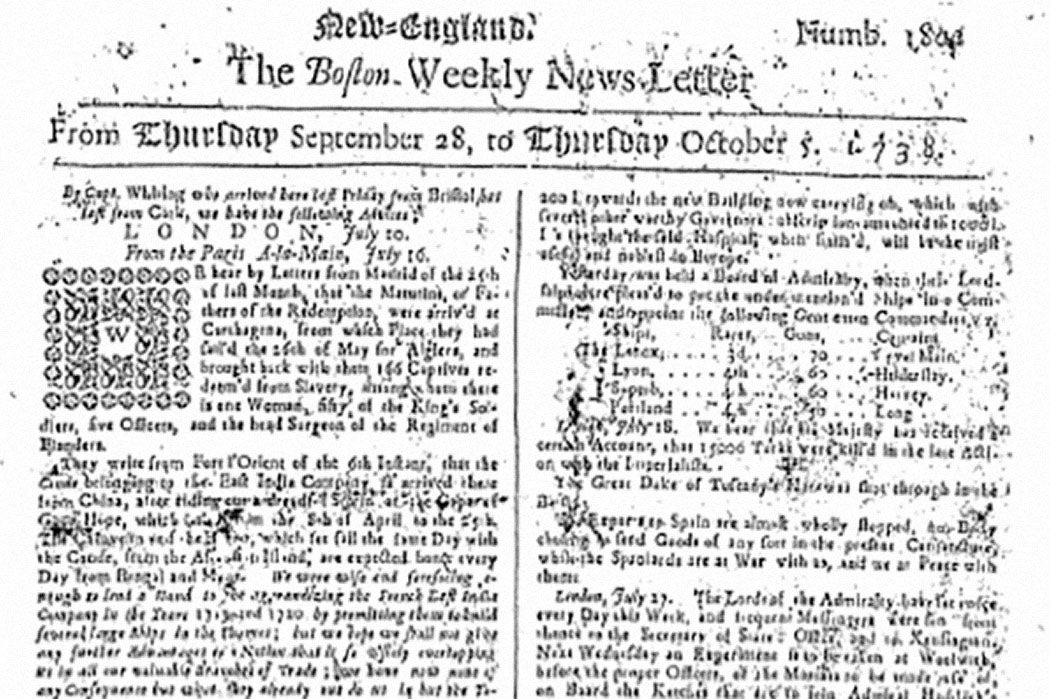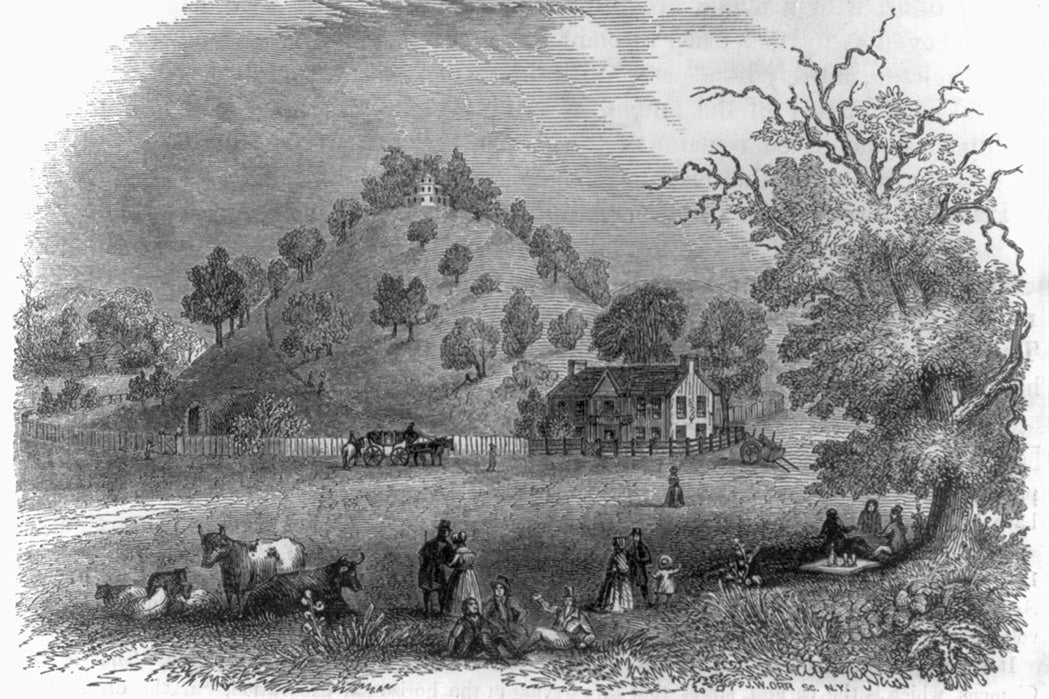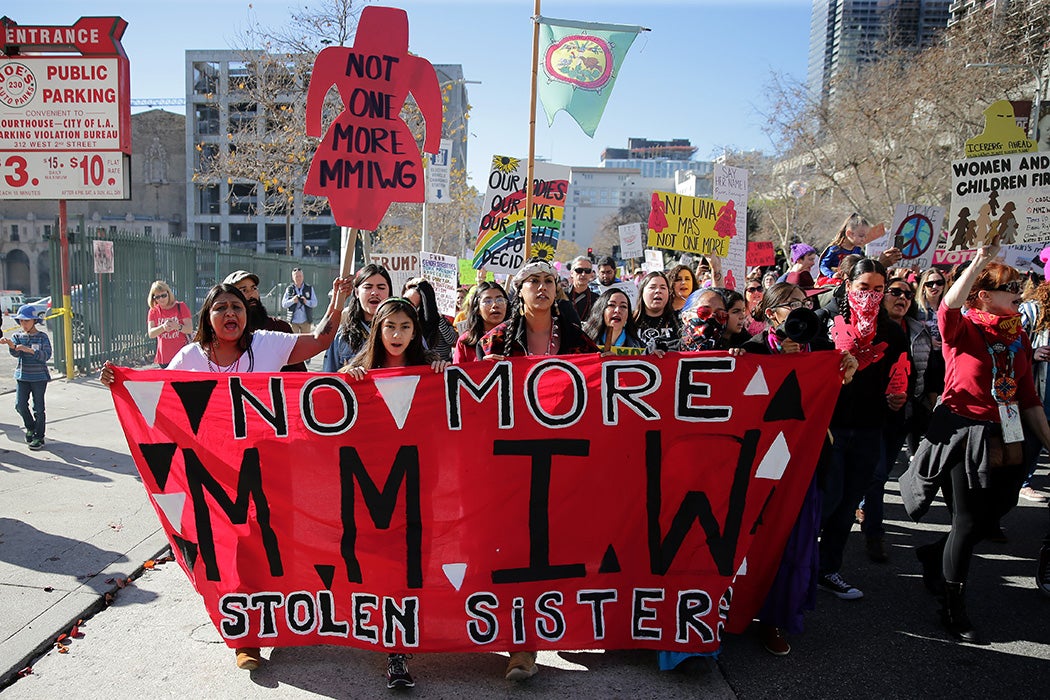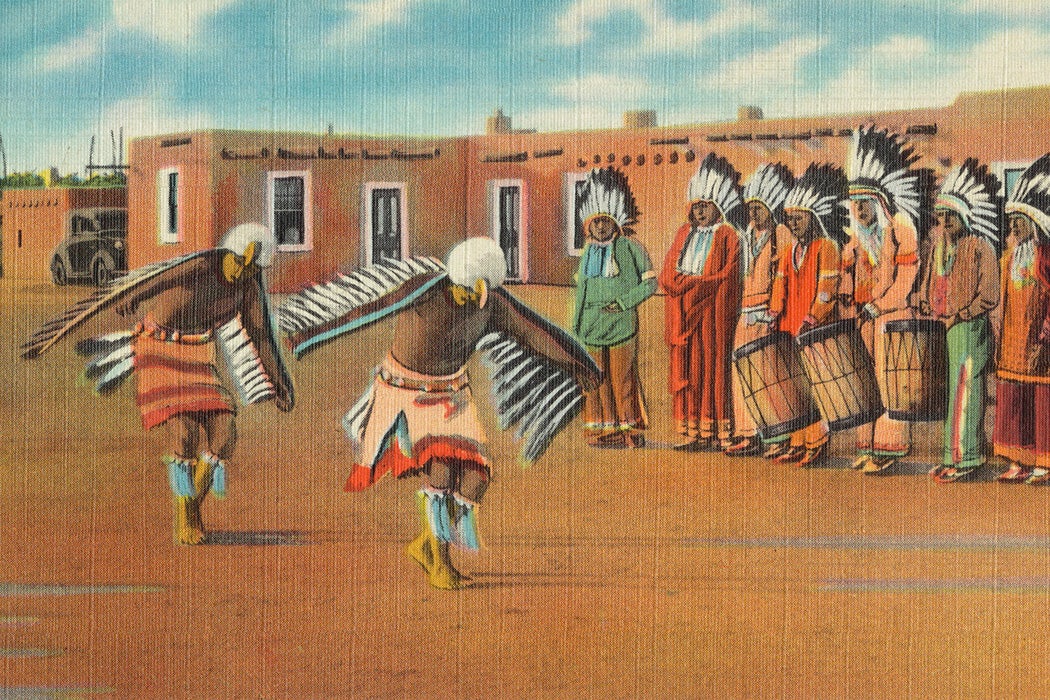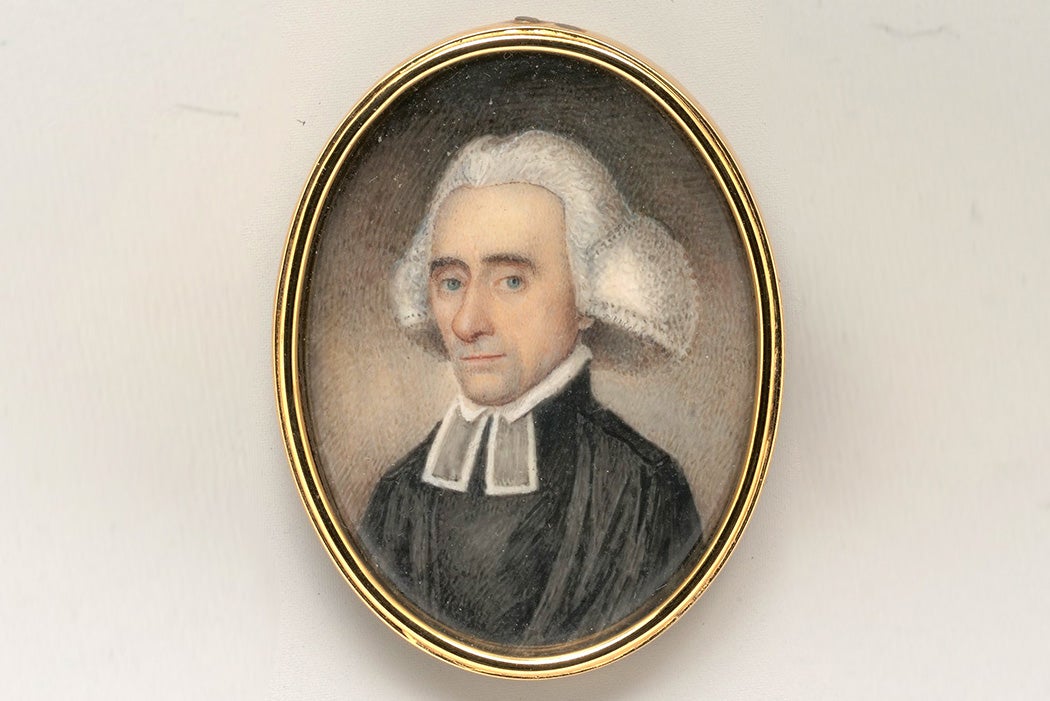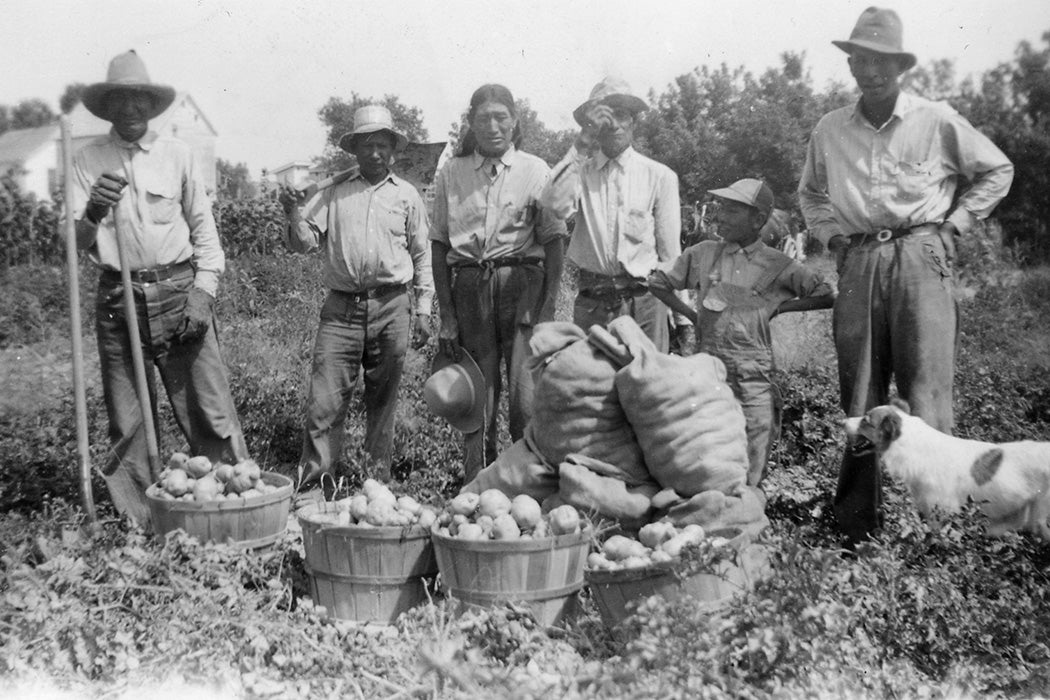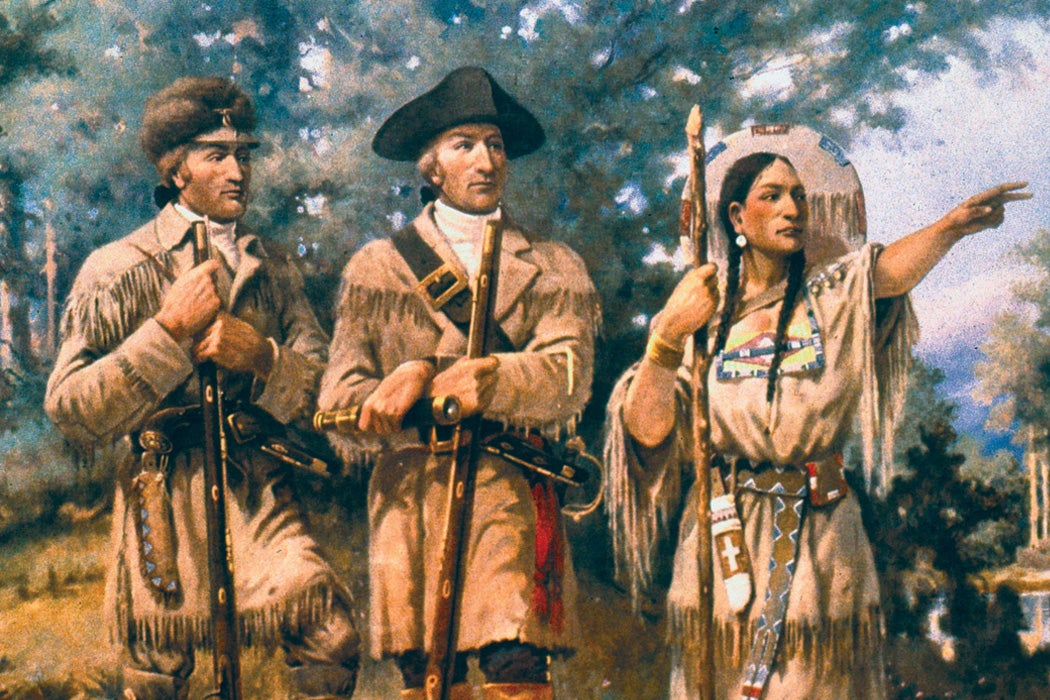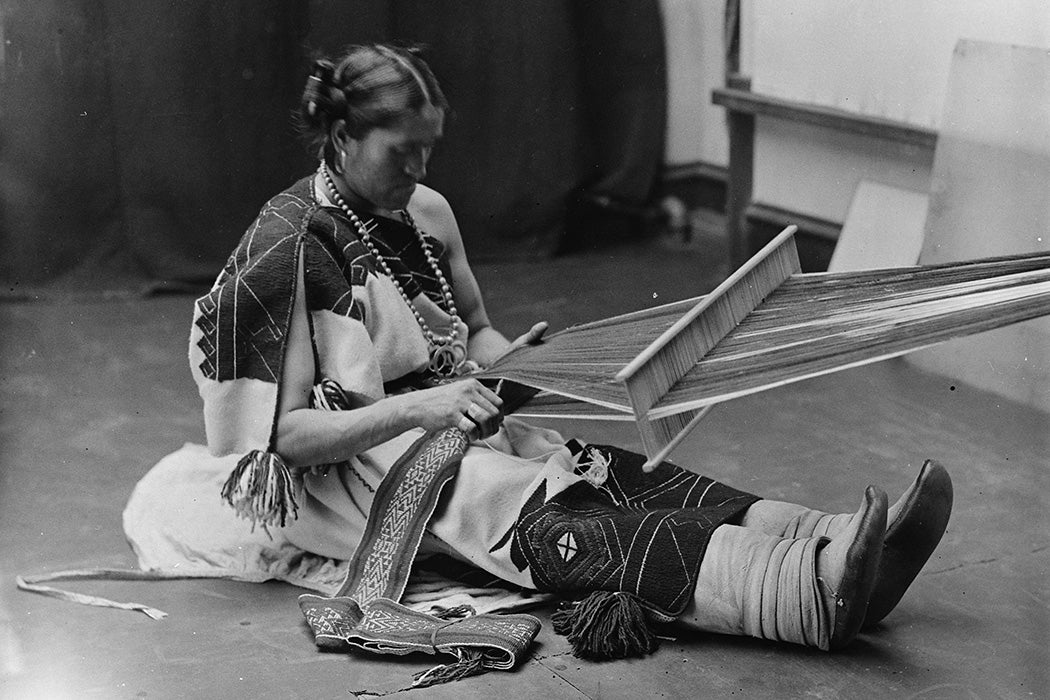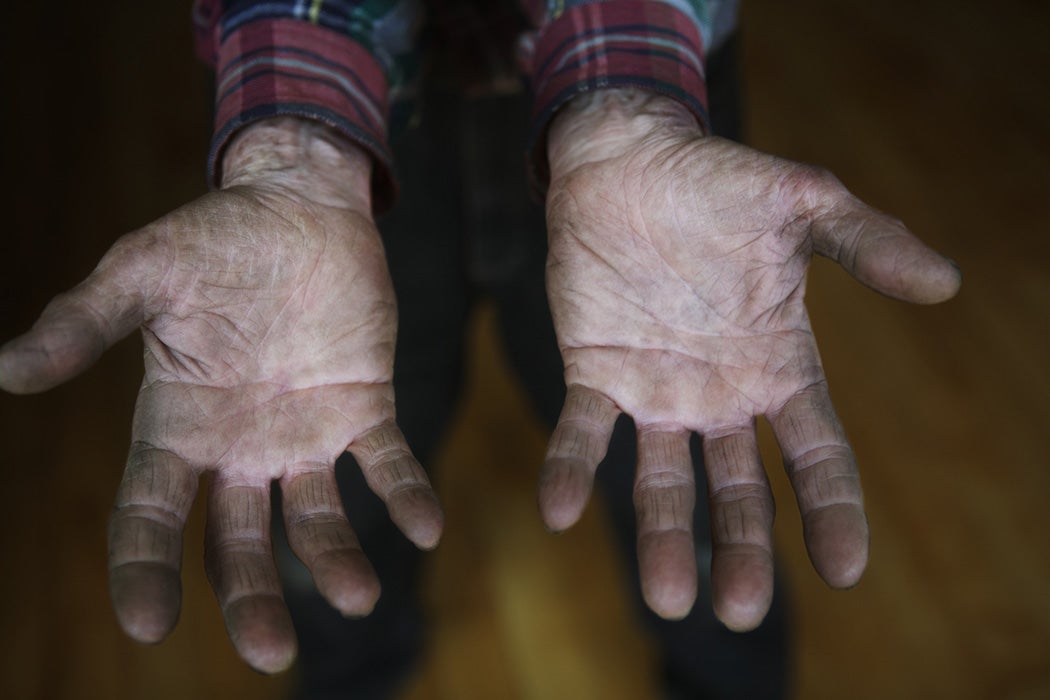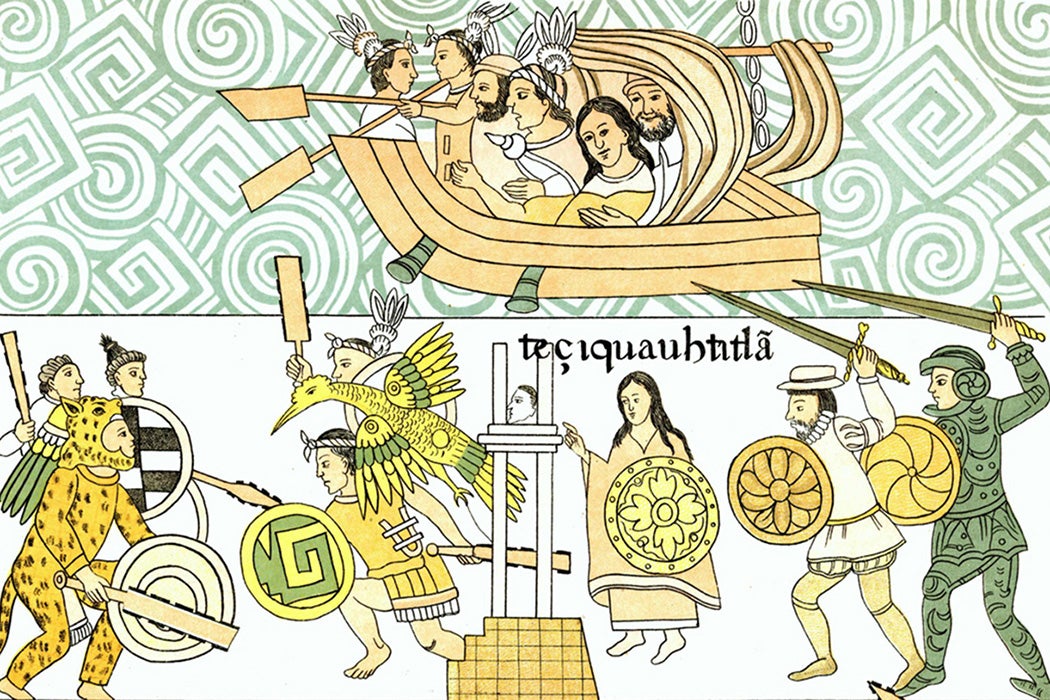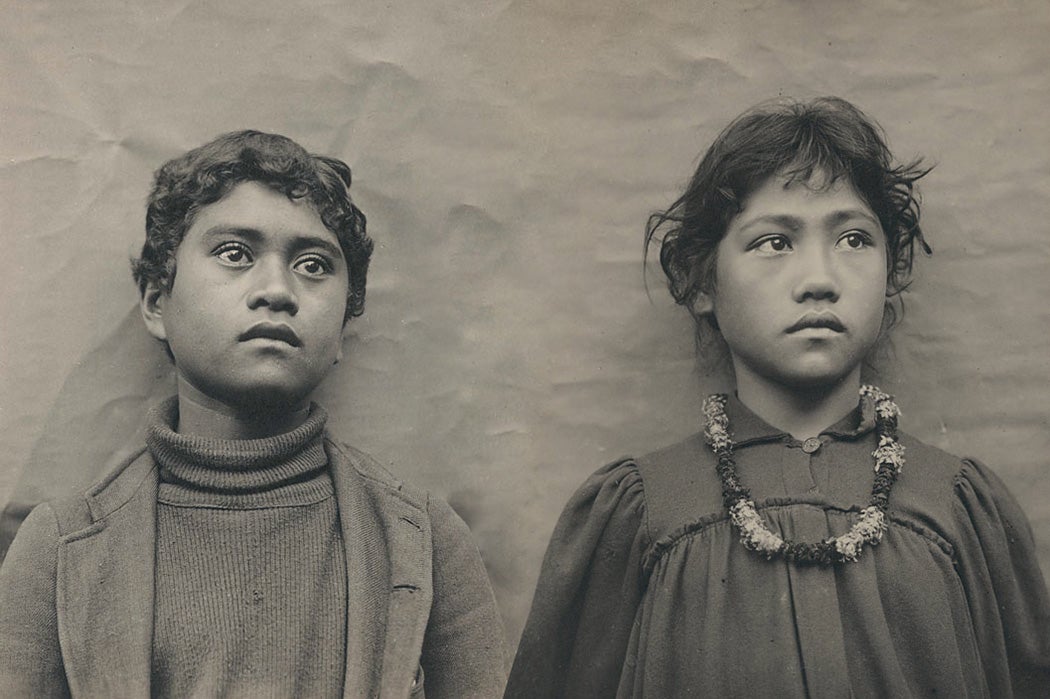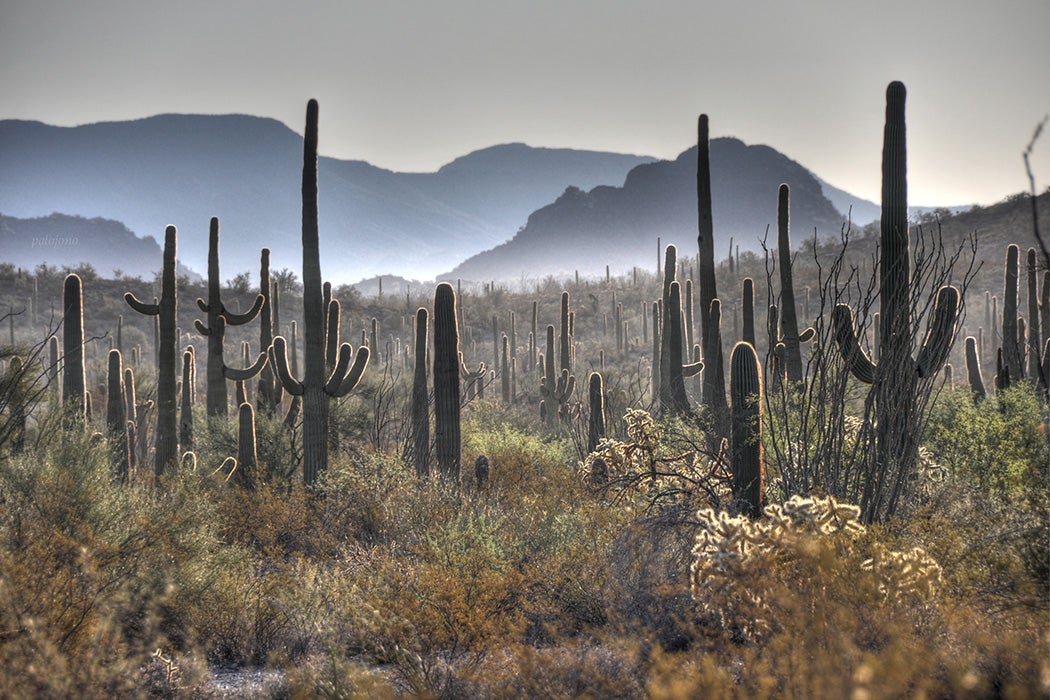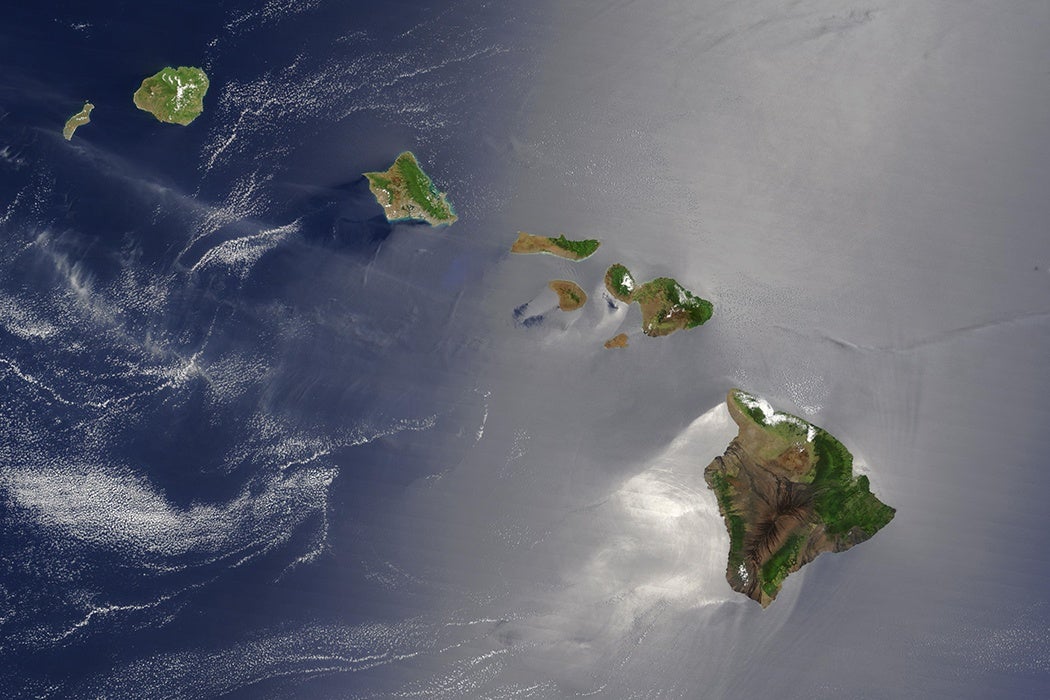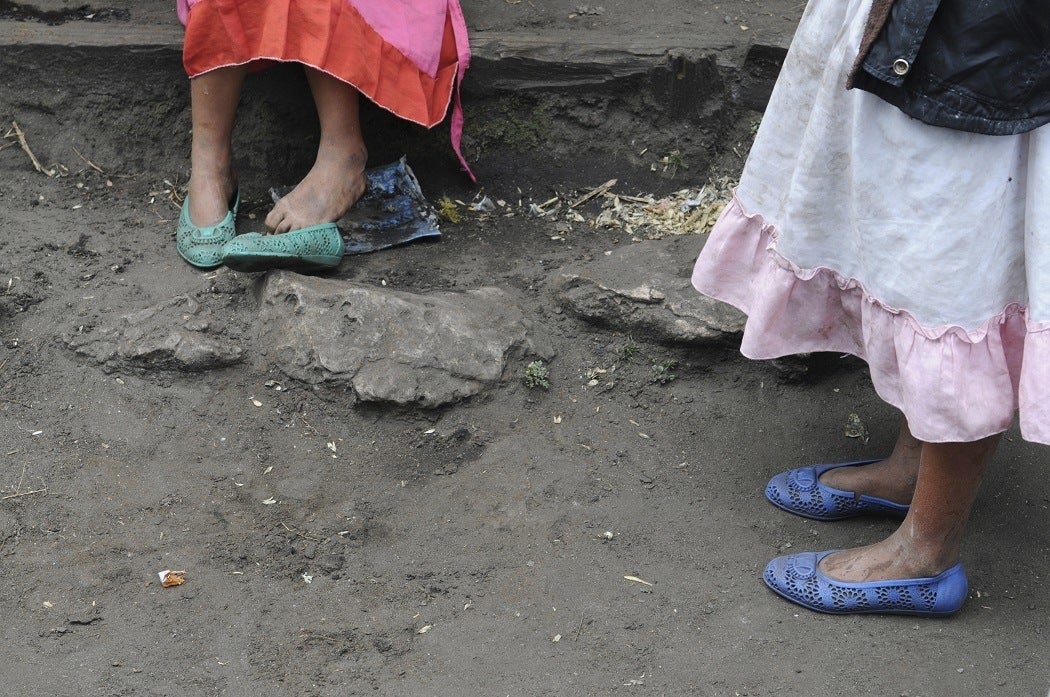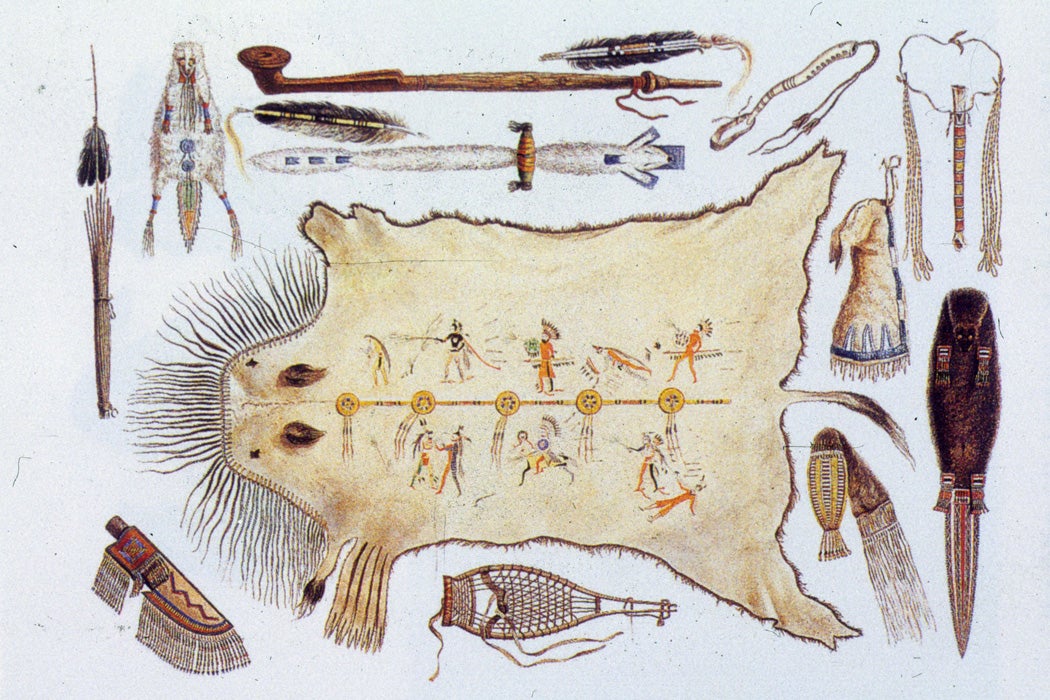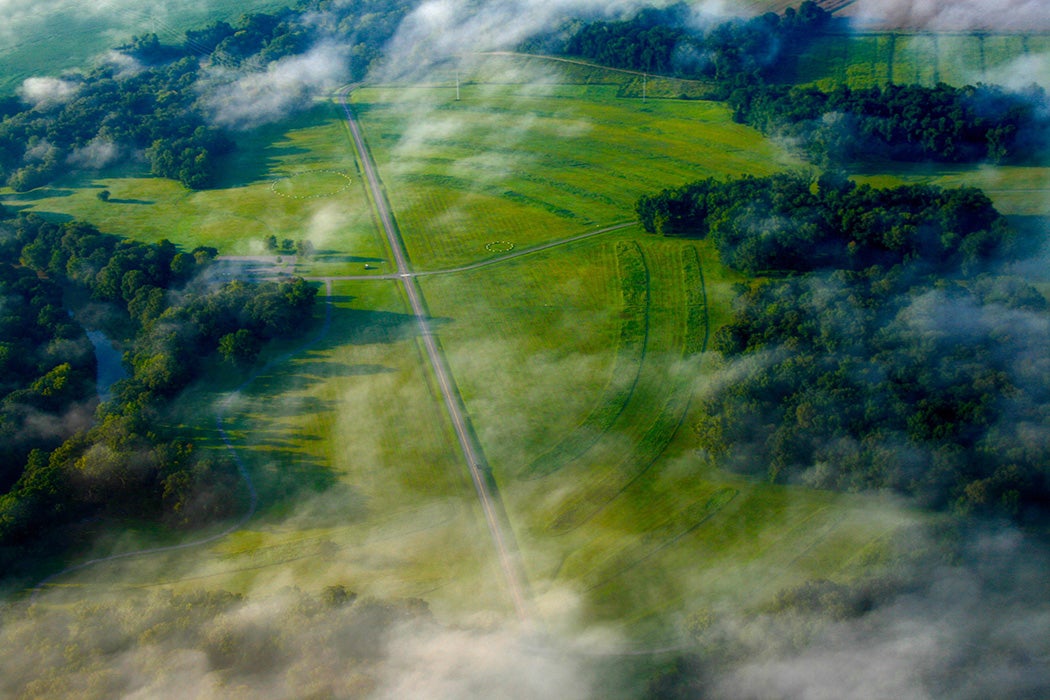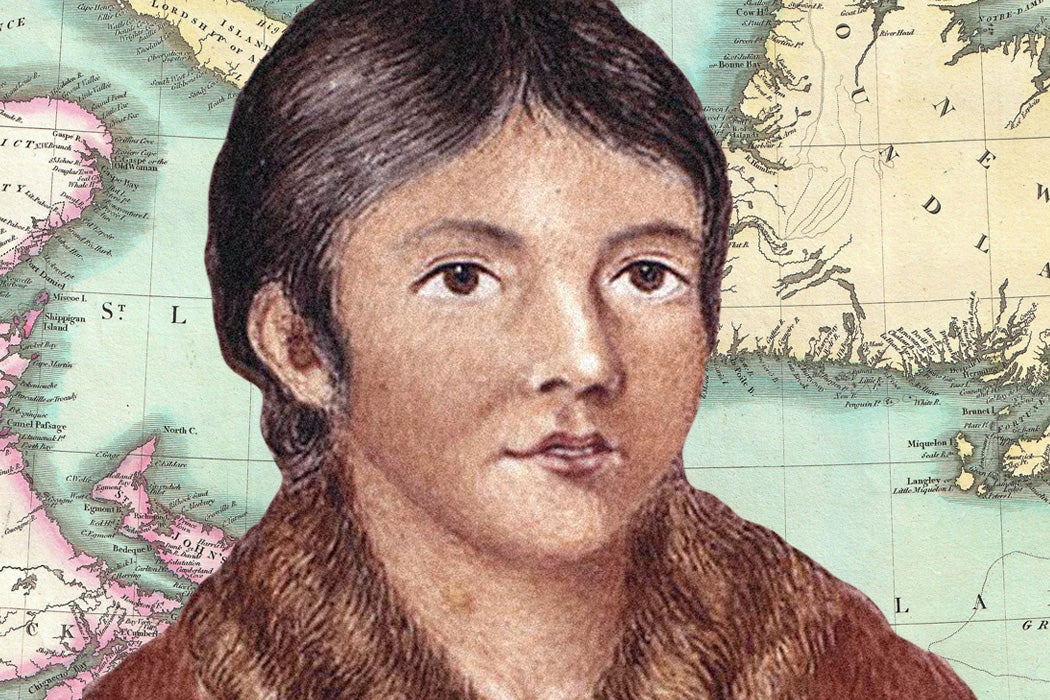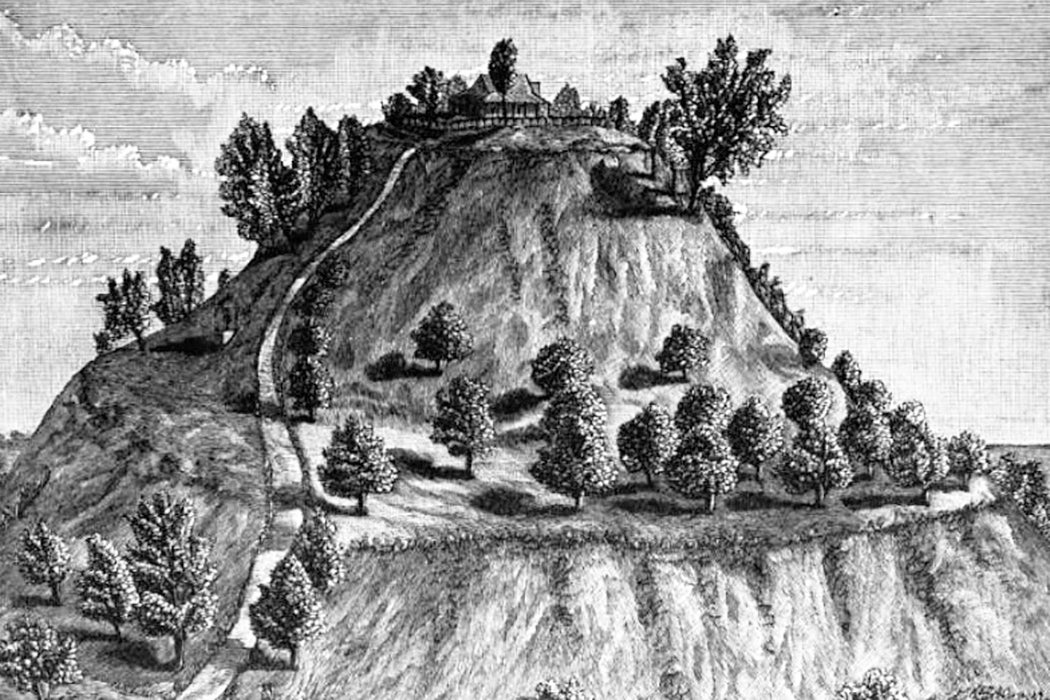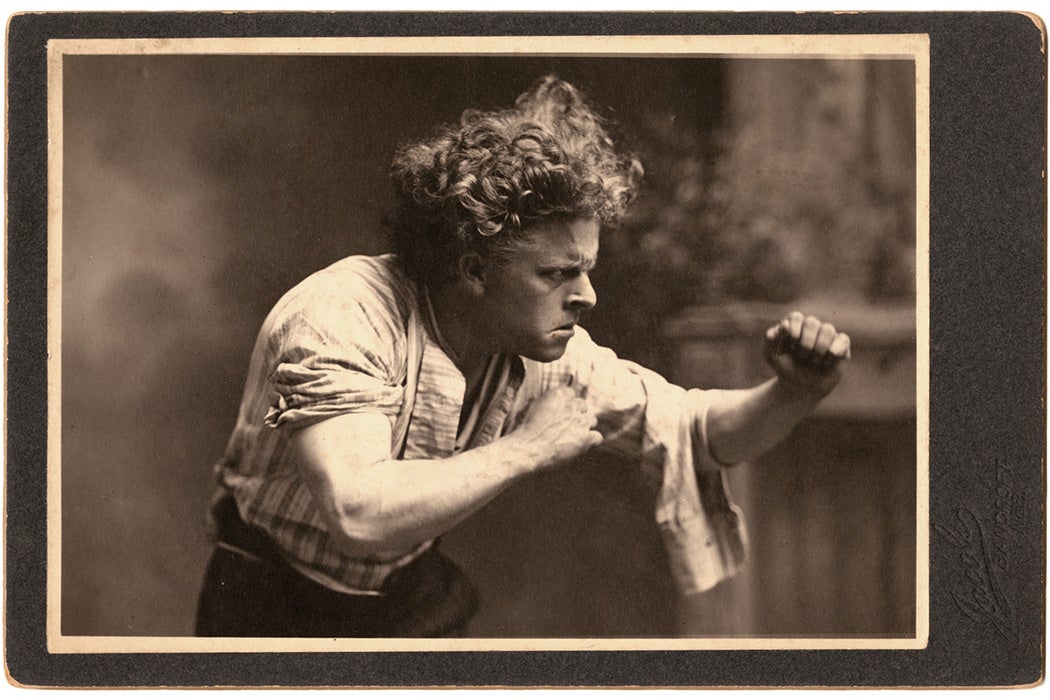The following stories, published over the last few years, honor specific Indigenous cultural practices and histories, dispel myths about Indigenous people in North and South America, and help us understand the systemic racism that has contributed to the suppression of Native American cultures and people.
Music, Sport, and Art
How Do Indigenous Athletes Fit into the Olympics?
August 7, 2021
Olympic athletes are divided into teams of nations. To Indigenous competitors, though, that can mean representing oppressive settler-colonial states.
The Native American Music Awards
January 27, 2022
Native American musicians and performers have been honored since 1998 by the Nammys.
Integrating Baseball, before Jackie Robinson
July 14, 2021
Black players were banned from Major League Baseball during the Jim Crow era. Other players walked the color line—gently.
What Can Native American People in Prison Teach Us About Community and Art?
November 18, 2022
An exploration of creativity, ingenuity, and resilience using the American Prison Newspapers collection and JSTOR. The second curriculum guide in this series.
What Smoke Signals Means 20 Years Later
June 24, 2018
This groundbreaking film was the first movie to be written, directed, co-produced, and acted by Native Americans.
The American Counter-Narrative of Ledger Drawings
December 19, 2016
Plains Indian ledger drawings offer a rich counter-narrative to the often-glamorized, or forgotten, history of the American West.
Education
The First Native American to Receive a Medical Degree
July 22, 2018
Susan LaFlesche Picotte was first Native American to be licensed to practice medicine in the U.S. She opened her own hospital, but didn't live to run it.
Inside the First Indigenous Sorority
August 16, 2022
Alpha Pi Omega, the first historically Native American sorority, supports Native students and creates cultural space for them on university campuses.
How Native Americans Taught Both Assimilation and Resistance at Indian Schools
December 13, 2017
In the nineteenth century, many Native American children attended “Indian schools” designed to blot out Native cultures in favor of Anglo assimilation.
Life in Indigenous Boarding Schools
July 30, 2021
Survivors of schools in the US spoke with scholars about their experiences of cruelty, neglect, and cultural degradation.
Why Academic-Indigenous Collaboration Is Tricky
October 11, 2021
Although many archaeologists are trained to prize objectivity, Indigenous scholars approach research with a different sort of grounding.
How (Not) to Teach Kids about Native Cultures
November 23, 2020
Even well-intentioned books for children can romanticize (or demonize) Native Americans. But better materials exist.
Kinship, Families, and Women
Christine Quintasket
October 10, 2022
Better known by the pen name Mourning Dove, Quintasket was a leader and activist who used her position as a public intellectual to fight for Colville rights.
Why the Dakota Only Traded among People with Kinship Bonds
October 4, 2019
“Trapping was not a ‘business for profit’ among the Dakota but primarily a social exchange,” one scholar writes.
Polygamy, Native Societies, and Spanish Colonists
April 19, 2021
Having more than one wife was an established part of life for some Native peoples before Europeans tried to end the practice.
Interview with MacArthur Fellow Sarah Deer: Native Women and the Law
October 17, 2014
MacArthur Fellow Sarah Deer discusses her legal work in preventing sexual violence among the Native American population.
The History of the Black Seminoles
November 29, 2020
The community's resilient history speaks of repeated invasions and resistance to enslavement.
Yes, Americans Owned Land Before Columbus
March 4, 2019
What you were taught in elementary school about Native Americans not owning land is a myth. The truth is much more complicated.
Horticulture and Hunting
Returning Corn, Beans, and Squash to Native American Farms
November 24, 2020
Returning the "three sisters" to Native American farms nourishes people, land, and cultures.
The Global Suppression of Indigenous Fire Management
October 12, 2020
Indigenous peoples' techniques to manage and benefit from fire are threatened, even as wildfires burn more frequently and intensely.
Plant of the Month: White Sage
July 27, 2022
An important part of Indigenous spirituality and identity, the aromatic evergreen shrub is being threatened by poachers and over-commercialization.
How Gwich’in Hunters Protect Caribou Herds
September 4, 2020
An Arctic indigenous community has developed complicated but flexible "rules" for its own hunters to follow. Respect for animals is paramount.
The Dogs of North America
May 3, 2021
Dogs were prolific hunters and warm companions for northeastern Native peoples like the Mi'kmaq.
Plant of the Month: The Runner Bean
May 27, 2020
From Aztec medicinal remedies to Darwin’s study of flower pollination, local knowledge about the runner bean reveals the importance of biodiversity.
How Native Americans Came to Fight Southwestern Fires
November 5, 2019
The practice began with the 1933 creation of the Civilian Conservation Corps, and, specifically, its Indian Division.
Resistance and Civil Rights
Subversive Student Writing at Carlisle Indian School
November 24, 2023
In the early twentieth century, some Anishinaabe students turned writing assignments meant to showcase assimilation into celebrations of resistance.
How an Incan Nobleman Contested Spanish History
November 29, 2021
Felipe Guaman Poma de Ayala left behind a one-of-a-kind object that undermines the crónicas de Indias.
Indigenous Kings in Londontown
November 8, 2023
In 1710, Queen Anne of England feted four Native American dignitaries—would-be political allies. Their presence at a performance of Macbeth caused a stir.
Wounded Knee and the Myth of the Vanished Indian
February 17, 2020
The story of the 1890 massacre was often about the end of Native American resistance to US expansion. But that’s not how everyone told it.
Remembering Wounded Knee at Standing Rock
November 25, 2016
Have you been wondering about the history of Standing Rock protests and the American Indian Movement? Learn why and how we “Remember Wounded Knee.”
Indigenismo in the United States
October 1, 2021
The adoption of Aztec cultural iconography by modern activists has roots in Mexican nationalist policies of the 1920s.
The Taínos Refused to Grow Food. The Spanish Starved.
October 12, 2020
Rebellion against invasion triggered a series of events that would take a "swift and violent toll" on a Caribbean island's native biodiversity.
Standing Rock and the U.N. Declaration on the Rights of Indigenous Peoples
October 10, 2016
Celebrate Indigenous Peoples' Day and learn about the history of the United Nations Declaration on the Rights of Indigenous Peoples.
Alaska’s Unique Civil Rights Struggle
March 26, 2018
A generation before Rosa Parks, a young Alaska Native woman was arrested for sitting in the "whites only" section of a Nome, Alaska movie theater.
Colonialisms, Past and Present
Renewable Energy and Settler Colonialism
May 2, 2024
What can we learn from colonial legacies in pursuit of sustainable futures?
Inventing an American Indian Rebellion
July 10, 2023
False rumors of an alleged Wampanoag uprising on Nantucket Island in 1738 were turned into a story of an Indian rebellion thwarted via a Boston newspaper.
Genocide in California
October 6, 2023
The extermination campaigns against the Yuki people, sparked by the California Gold Rush and statehood, weren’t termed genocide until the mid 1970s.
Native Origin Stories As Tools of Conquest
August 7, 2023
In the nineteenth century, the Euro-American “Lost Tribes of Israel” theory was one of the most popular explanations for the existence of Indigenous peoples.
Mothers Against Mothers in the American West
April 4, 2022
The participation of white mothers in the "bitter robbery" of Indigenous children from their families was a cruel irony in the colonialist programs of the US and Australia.
Colonial Traffic in Native American Women
December 13, 2021
Slavery in North America was not an institution of singular evil.
Why White Women Tried to Ban Native American Dances
March 15, 2019
In the early 1920s, reformers obsessed over the sexual nature of some Pueblo rituals, and attempted to control their performance.
Yale’s Lost Indian Museum
March 10, 2023
The (now lost) collection of Native American artifacts at Yale College reveals the mechanics and high cost of the settler-colonialist nation-building project.
Suppressing Native American Voters
August 25, 2020
South Dakota has been called "the Mississippi of the North" for its long history of making voting hard for Native Americans.
How Sacagawea Became More Than A Footnote
March 6, 2019
A suffragist searching for a heroine found Sacagawea and lifted her out of historical obscurity.
One Barrier to Two-Spirit History: Settler Archives
October 14, 2020
Historians need to know more about the roles of two-spirit Native Americans, but relying on written records isn't always productive.
The Trouble with “Native DNA”
January 6, 2021
Genetic testing to determine who is Native American is problematic, argues Native American studies scholar Kim TallBear.
How Aztecs Reacted to Colonial Epidemics
September 23, 2020
Colonial exploitation made the indigenous Aztec people disproportionately vulnerable to epidemics. Indigenous accounts show their perspective.
How Influenza Devastated the Navajo Community in 1918
July 13, 2020
Like COVID-19, the 1918 influenza pandemic moved swiftly through the Navajo community, but firsthand accounts of the devastation are rare.
How Public Schools “Americanized” Hawai‘i
February 3, 2020
Colonial education administrators recruited teachers from the mainland, but soon realized another strategy was in order.
Bulldozers Versus Biodiversity, Then and Now
January 24, 2020
Trump's border wall threatens habitats in Arizona's Sonoran Desert. What happened when the area was bulldozed in the 1950s?
The Struggle for Hawai‘i
August 21, 2016
Hawai‘i has been a state for fifty-seven years, but its history goes back much further.
Language
The Loneliness of the Long Distance Speaker: Linguistic Isolation in the Modern World
August 4, 2015
Ayapaneco, an endangered Mexican language, sparked linguistic interest when the last two speakers of the language were not speaking to each other
What We Lose When We Lose Indigenous Knowledge
October 16, 2019
By mistaking a culture’s history for fantasy, or by disrespecting the wealth of Indigenous knowledge, we’re keeping up a Columbian, colonial tradition.
And More
The Riches of Poverty Point
October 21, 2023
Earthworks built around 3,700 years ago in Louisiana centered an exchange system that stretched up the Mississippi and into the Ohio and Tennessee Valleys.
Native Nations and the BIA: It’s Complicated
January 15, 2021
Historically, relations between Native Americans and the Bureau of Indian Affairs have been contentious. Is that still the case?
Who Were the Beothuk, the Lost People of Newfoundland?
January 31, 2019
The remains of two of the very last of the Beothuk are finally being repatriated to Canada. Why has it taken almost 200 years?
The Mysterious Pre-Columbian Settlement of Cahokia
August 15, 2017
Cahokia was the largest pre-columbian settlement north of Mexico. It collapsed centuries before Europeans arrived in the region. What happened?
A Tale of Two Visionaries
December 13, 2023
What roiled the mind of Nebraska poet John Neihardt with whom Black Elk, the iconic Lakota holy man, shared his story?
This collection is periodically updated to add relevant material. It was updated most recently on October 11, 2024.
Support JSTOR Daily! Join our new membership program on Patreon today.
